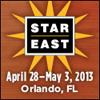 |
The Test Coverage Outline: Your Testing Road Map
Slideshow
To assist in risk analysis, prioritization of testing, and test reporting (telling your testing story), you need a thorough Test Coverage Outline (TCO)—a road map of your proposed testing activities. By creating a TCO, you can prepare for testing without having to create a giant pile of...
|
Paul Holland, Testing Thoughts
|
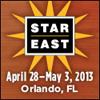 |
Flintstones or Jetsons? Jump Start Your Virtual Test Lab
Slideshow
The power of virtualization has made it easy and inexpensive to create multiple environments for testing. How you implement your virtualization strategy can boost not only the savings on physical gear and availability of test environments but also your testing productivity.
|
David Silk, Verisign, Inc.
|
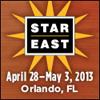 |
Mobile Testing Methodologies: Trends, Successes, and Pitfalls
Slideshow
In today's dynamic mobile marketplace—where new handsets and mobile operating systems are released every day—your ability to deal with these changes which impact your mobile product is vital. The mobile application lifecycle today must be short; must be of great quality; cover...
|
Eran Kinsbruner
|
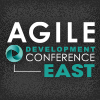 |
Specification-by-Example: A Cucumber Implementation
Slideshow
We've all been there. You work incredibly hard to develop a feature and design tests based on written requirements. You build a detailed test plan that aligns the tests with the software and the documented business needs. When you put the tests to the software, it all falls apart because the requirements were updated without informing everyone. But help is at hand. Enter business-driven development and Cucumber, a tool for running automated acceptance tests. Join Mary Thorn as she explores the nuances of Cucumber and shows you how to implement specification-by-example, behavior-driven development, and agile acceptance testing. By fostering collaboration for implementing active requirements via a common language and format, Cucumber bridges the communication gap between business stakeholders and implementation teams.
|
Mary Thorn, Deutsche Bank
|
|
|
Better Test Designs to Drive Test Automation Excellence
Slideshow
Test execution automation is often seen as a technical challenge-a matter of applying the right technology, tools, and smart programming talent. However, such efforts and projects often fail to meet expectations with results that are difficult to manage and maintain-especially for large and complex systems. Hans Buwalda describes how the choices you make for designing tests can make-or break-a test automation project. Join Hans to discover why good automated tests are not the same as the automation of good manual tests and how to break down tests into modules-building blocks-in which each has a clear scope and purpose. See how to design test cases within each module to reflect that module's scope and nothing more. Hans explains how to tie modules together with a keyword-based test automation framework that separates the automation details from the test itself to enhance maintainability and improve ROI.
|
Hans Buwalda, LogiGear Corporation
|
|
|
Tests and Requirements: You Can't Have One without the Other The practice of software development, including agile, requires a clear understanding of business needs. Misunderstanding requirements causes waste, missed schedules, and mistrust within the organization. A disagreement about whether or not an incident is a defect can arise between testers and developers when the cause is really a disagreement about the requirement itself. Ken Pugh describes how you can use acceptance tests to decrease this misunderstanding of intent. A testable requirement provides a single source that serves as the analysis document, acceptance criteria, regression test suite, and progress tracker for any given feature. Ken explores the creation, evaluation, and use of testable requirements by the business and developers. Examine how to transform requirements into stories- small units of work-each of which has business value, small implementation effort, and easy to understand acceptance tests.
|
Ken Pugh, Net Objectives
|
|
|
State-of-the-Art Cloud Testing: Experiences with Bing Search The cloud is penetrating every technology organization and almost every software product or service. The cloud affects everything inside development, bringing profound changes to how engineers build, test, release, and maintain software and systems. Sharing his experiences at Microsoft working on the Bing search engine, Ken Johnston reveals how they devised and implemented a test-oriented architecture (TOA) at every layer within their product solution. He explores what stayed the same and what changed when their test organization moved to state-of-the-art cloud testing. Learn how the cloud is driving broader adoption of agile development and driving organizations toward accelerated release rates. Find out how the Bing team shifted to a “continuous testing in production” model for testing web services and eliminated the surprises that came from the old approach of big-at-the-end testing.
|
Ken Johnston, Microsoft Corporation
|
|
|
Test-driven Development: An On-stage Demonstration Test-driven development (TDD) is a skill that takes patience to master-you can’t learn it reading a book. As with learning any new language, to gain fluency you need to practice TDD with competent coaching and lots of hard work. Many well-intentioned programmers try and finally give up on TDD because they never develop the fluency it requires. On stage, Llewellyn Falco leads a live TDD demonstration, talking through the process and microsteps of: (1) studying a feature, (2) creating an initial test, and (3) iteratively developing the related test code and feature code until the feature is completely programmed. Watch how to iteratively write a test, see it fail, and then write the feature code to make it pass. After explaining the theory behind the particular TDD technique used, Llewellyn leads participants in testing progressively more complex objects and scenarios.
|
Llewellyn Falco, DevelopMentor
|
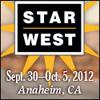 |
STARWEST 2012: Lightning Strikes the Keynotes
Video
Lightning Talks have been a popular part of many STAR conferences. Lightning Talk session consists of a series of five-minute talks by different speakers within one presentation period and are an opportunity to deliver their single biggest bang-for-the-buck idea in a rapid-fire presentation.
|
Lee Copeland, Software Quality Engineering
|
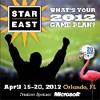 |
STAREAST 2012 Keynote: Evaluating Testing: The Qualitative Way
Video
Testers and managers have wrestled with the problem of evaluating software products and testing efforts, often using approaches derived from manufacturing, construction, and physical sciences. These approaches have been partially successful because software products aren't physical products.
|
Michael Bolton, DevelopSense Inc.
|

